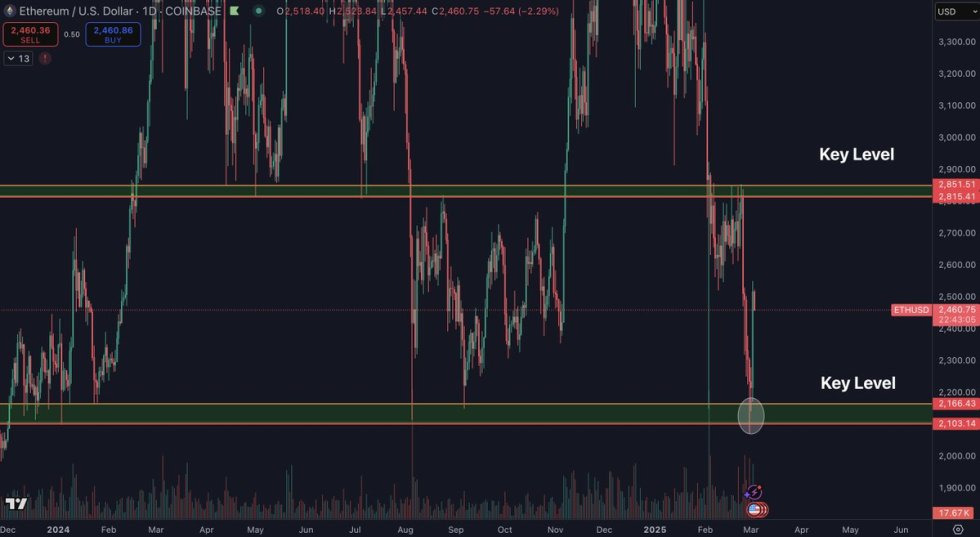Over the last five years cryptocurrencies have exploded at an unprecedented rate, but so have the different methods of making income in the cryptocurrency world. No longer do investors have to simply rely on trading to make a profit from crypto. Now, crypto enthusiasts can contribute to blockchains through PoS (Proof of Stake), provide liquidity to pools, and extract the best possible yields through farming. The possibilities are almost endless and ever-expanding for investors wanting both passive and active income-generating activities.
With such great returns available to be made in the cryptocurrency world, analyzing the opportunity cost of each option is the best way to find a route that suits you.
Let's discuss the differences between Yield Farming, Staking and Liquidity Mining:
What Is Yield Farming?
Yield farming is the act of generating rewards such as interest and cryptocurrency by staking assets on dApps through a DeFi platform. The cryptocurrency is locked up for a certain period of time and acts as liquidity for lending, borrowing and trading.
Automatic Market Makers (AMMs)
What Is Liquidity Mining?
Liquidity mining is a form of yield farming and another DeFi lending protocol, where users will stake their cryptocurrency into a pool to be used by other users. Liquidity mining rewards are focused on receiving coins from the platform they are ‘lending’ on, hedging their bets that their value will increase in the future.
Like any liquidity pool, providers are rewarded based on the amount of the liquidity pool they provided for.
What Is Staking?
Most staking protocols come with specific lock-up rules to ensure liquidity is confirmed for a certain period of time. Staking is the backbone of the PoS (Proof of Stake) model, allowing individual investors to contribute to the blockchain with their cryptocurrency by staking it through validators. Validators ensure each transaction is secure without a regular third party, like a bank. Unlike the Proof of Work model, which is used in bitcoin, PoS is a lot less resource-intensive and efficient.
These all Sound Very Similar, What’s the Difference?
Staking
Maybe the biggest difference between Staking, yield farming and mining is where you can provide liquidity. Staking, as it’s used as the core validating method for many cryptocurrencies is available almost everywhere. Big centralized exchanges or CEXs, such as Binance allow their users to simply provide the crypto required for the stake and they will configure the rest. This allows for hands-off staking and extremely ‘passive’ income.
Also, staking has a lower barrier to entry, many users can stake as little as one USD to start earning rewards.
Safety: Well over 100 Billion in crypto assets are currently being staked, as they are the backbone of many cryptocurrencies, unlike yield farming and liquidity mining which operate on more niche or less used platforms. With this massive participation comes safety.
- You are much less likely to lose money staking, although it is possible.
- Rewards can be completely passive
- Complex strategies are not required
Yield Farming
Yield farming when done properly is a lot more hands-on than traditional staking. Investors' crypto is still being ‘staked’ but can only be done on DeFi platforms, such as Pancake swap or Uni swap.
Yield farming operates on smaller blockchains to help provide liquidity, creating much more risk potential.
With this extra effort comes extra reward. Yield farmers can receive a cut in transaction fees and token rewards on top of their usual interest, making the potential APY a lot more lucrative. However, for yield farmers to truly maximize their earnings, in the spirit of a yield farmer, they can change pools as often as weekly and are constantly readjusting their strategies to maximize earnings.
As you can see, yield farming has a higher barrier to entry than staking and liquidity mining, especially when participating in pools run on chains with high fees, such as ERC-20.
Liquidity Mining
Liquidity mining directly helps keep blockchain technology decentralized. The main difference is the rewards received. Liquidity miners will often receive the native token of the blockchain as a reward and have a chance to earn governance tokens, giving them a vote on any new legislature, empowering each individual.
The Risks Involved with DeFi
As traditional staking can be completed on centralized exchanges, like staking your CRO on crypto.com they are less vulnerable to the downsides of DeFi. However, staking is the basis of yield farming and liquidity mining, so the risks listed below are able to occur on any DeFi protocol. Staking is also mainly done on DeFi protocols, only recently becoming more mainstream with big exchanges offering the option. Here are the biggest risks you should be aware of as a potential user:
- Exit Scams: Providing liquidity on new blockchains means exit scams such as rug pulls are more common and harder to foresee.
- Smart Contract Exploits: Bugs in smart contracts can be abused to take funds from liquidity providers.
- Information asymmetry: There is no centralized body regulating information that most investors are used to. Although DeFi creates a trustless and permisionless space for investors, great information asymmetry can promote distrust in users while combining with the anonymity of crypto creates a marketplace rife with scams.
- Impermanent Loss: Can happen when the liquidity you provided is worthless at the time of withdrawal than when you put it in the pool. Liquidity is often locked for a set period of time, anything can happen in the crypto market during that time.
Staking Is Not Free from Risk
Staking may seem like the obvious option after reading the risks of DeFi protocols and the ease of rewards. However, nothing in crypto is risk-free!
All methods of locking up cryptocurrency come with the risk of impermanent loss, meaning the cryptocurrency that you have staked has decreased in value compared during the lock-up period, compared to the amount of interest received.
Also, most users will not become validators and only provide their liquidity to a validator of their choosing. Validators are open to slashing events, a process that occurs to punish validators for wrong behavior. Slashing events, depending on the rules, will slash a certain percentage or status amount of cryptocurrency as punishment.
Which Method Grants the Best Rewards
There is no one size fits all for staking, yield farming or liquidity mining. Returns depend almost completely on the individual's ability to find the best stakes or farms and their process of re-allocating rewards from their stakes.
Also, luck and diversification play a huge role in the success of any crypto investor, with staking, yield farming and liquidity mining being no different.
With any type of investing, the attitude the investor has towards risk also plays a massive role in the potential gain. Staking, for example, can be extremely lucrative when compared to other interest-receiving investments such as dividends. Already, you can stake cryptocurrency relatively safely, for crypto standards, for great double-digit APY, unheard of outside the crypto world. So, many investors should be happy with that return and with enough capital can make a large weekly return by staking cryptocurrencies with big backing, such as CRO.
Knowing what you want from your investments is key in the staking world. Yield farmers are naturally going to pursue the highest yields possible, many simply for bragging rights, so always focus on what your goals are and hone in on them
You should always do your own research before blinding jumping into what seems like a great opportunity, especially in the land of DeFi.
Great Platforms to Start Staking
- Nexo: Up to 8.5% APR while staking Bitcoin. Being able to receive such massive rewards from the largest and safest best in the crypto world is a gem many investors are missing.
- Crypto.com: Crypto Visa card options with up to 10% APR, paid weekly. Crypto.com offers several great options for staking their native currency, CRO, and many others with easy access to DeFi with their friendly DeFi wallet app.
- Kraken: Great platform with a great pool of stakable currencies to choose from, with a great reputation for security and privacy.
Yield-Farming / Liquidity Mining
All yield-farming and liquidity are done through DeFi, meaning you must interact with a decentralized exchange so it’s important you do your own research before jumping in. The rewards can be high, but so are the stakes. Some of the most trusted DeFi platforms to start your yield farming or liquidity mining journey include:
- Pancake Swap
- Sushi Swap
- 1inch
- Uniswap
- Curve Finance
Conclusion
Making the best investment in a growing and everchanging market like cryptocurrency can be paralyzing. Ensuring you are receiving the best rewards with the lowest rate can create too many options that investors chose none.
Most importantly, investors should consider their risk tolerance as the number one factor guiding their investment choices. In the world of cryptocurrency staking and yield farming, especially on DeFi, the higher the potential rewards, the less likely that option will be viable for a long time.
Decide what factors are most important to you, whether that be security or passivity, create a game plan and execute.
Good Luck!
Over the last five years cryptocurrencies have exploded at an unprecedented rate, but so have the different methods of making income in the cryptocurrency world. No longer do investors have to simply rely on trading to make a profit from crypto. Now, crypto enthusiasts can contribute to blockchains through PoS (Proof of Stake), provide liquidity to pools, and extract the best possible yields through farming. The possibilities are almost endless and ever-expanding for investors wanting both passive and active income-generating activities.
With such great returns available to be made in the cryptocurrency world, analyzing the opportunity cost of each option is the best way to find a route that suits you.
Let's discuss the differences between Yield Farming, Staking and Liquidity Mining:
What Is Yield Farming?
Yield farming is the act of generating rewards such as interest and cryptocurrency by staking assets on dApps through a DeFi platform. The cryptocurrency is locked up for a certain period of time and acts as liquidity for lending, borrowing and trading.
Automatic Market Makers (AMMs)
A key concept for yield farming is AMMs, which liquidity Liquidity The term liquidity refers to the process, speed, and ease of which a given asset or security can be converted into cash. Notably, liquidity surmises a retention in market price, with the most liquid assets representing cash. The most liquid asset of all is cash itself. · In economics, liquidity is defined by how efficiently and quickly an asset can be converted into usable cash without materially affecting its market price. · Nothing is more liquid than cash, while other assets represent varying degrees of liquidity. This can be differentiated as market liquidity or accounting liquidity.· Liquidity refers to a tangible construct that can be measures. The most common ways to do so include a current ratio, quick ratio, and cash ratio. What is the Definition of Liquidity? Liquidity is a common definition used in investing, banking, or the financial services space. Its primary function is to ascertain how quickly a given asset can be bought, sold, or exchanged without a disparity in market price. Which of the following assets is the most liquid? By definition, in terms of liquidity, cash is unequivocally seen as the most liquid asset in an economic sense. This is due to its widespread acceptance and ease of conversion into other assets, forms of cash, or currencies, etc. All other liquid assets must be able to be quickly and efficiently converted into cash, i.e., financial liquidity. This includes such things as stocks, commodities, or virtually any other construct that has an associated value. By extension, illiquid or non-liquid assets are not able to be quickly converted into cash. These assets, also known as tangible assets, can include such things as rare art or collectables, real estate, etc. Liquidity Spectrum Liquid assets can be defined primarily as either cash on hand or simply an asset that can be easily or readily converted into usable cash. It is important to note that cash is not uniformly liquid for several reasons. The below examples encompass all types of assets and their corresponding level of liquidity. Examples of Liquid Assets or Securities A good example of this is the US dollar, which is recognized or accepted globally, and backed by the US government or Federal Reserve Bank. Other major forms of cash include Euros, or major currencies. This differs notably from the legal tender in many emerging countries or others for political or economic reasons. Cash aside, assets such as stocks or equities, bonds and other securities, money market assets, marketable securities, US treasuries or T-notes, exchange-traded funds (ETFs), a savings account, and mutual funds serve as the most liquid assets. These are generally assumed to be quick assets. Each of these assets can be converted into cash either instantaneously, or via any brokerage platform, exchange, etc., often in as little as minutes or seconds. As such, these assets are liquid. Examples of Illiquid Assets or Securities Conversely, illiquid assets still retain importance and value, though are much more difficult to convert into cash. Common examples of this include land or real estate, intellectual property, or other forms of capital such as equipment or machinery. In the examples above, liquid assets are assumed to be convertible into cash without substantial fees or delays in time. Illiquid assets on the other hand often suffer from fees or additional conversion costs, processing times, ultimately creating a price disparity. The best example of an illiquid asset is a house. For many individuals this is the most valuable asset they will own in their entire lives. However, selling a house typically requires taxes, realtor fees, and other costs, in addition to time. Real estate or land also takes much longer to exchange into cash, relative to other assets. Types of Liquidity Overall, liquidity is a broad term that needs to be defined by two different measures: market liquidity and accounting liquidity. Both measures deal with different constructs or entities entirely, though are useful metrics with regards to individuals or financial markets. Market Liquidity Market liquidity is a broader term that is used by a market maker to measure the ease of which assets can be bought and sold at transparent prices, namely across exchanges, stock markets, or other financial sectors. This can include among others, a real estate or property market, market for fine arts and collectable, and other goods. Market Liquidity Example As mentioned above, certain financial markets are much more liquid than others. The degree to which stocks from large companies or foreign currencies can be exchanged is much easier than finding a readily available market for antiques, collectables, or other capital, regardless of utility. Overall, a stock market, financial brokerage, or exchange is considered to have the high market liquidity. This is because the difference between both the bid and ask prices between parties is very low. The lower the spread between these two prices, the more liquid a given market is. Additionally, low liquidity refers to a higher spread between two prices. Why Liquidity Varies and What Does Liquidity Mean in Stocks? Every asset has a variable level of liquidity meaning this can change depending on what is being analyzed. One can define liquidity in stocks or stock markets in the same way as in foreign exchange markets, brokers, commodities exchanges, and crypto exchanges. Additionally, how large the market is will also dictate liquidity. The foreign exchange market for example is currently the largest by trading volume with high liquidity due to cash flows. This is hardly surprising given that forms of cash or currencies are being exchanged. What is Liquidity in Stocks? A stock's liquidity refers to how rapidly shares of a stock can be bought or sold without largely impacting a stock price. By definition, liquidity in stocks varies for a number of reasons. Stocks with low liquidity may be difficult to sell and may cause you to take a bigger loss if you cannot sell the shares when you want to. In finance, the most liquid assets are always the most popular. By extension, if a spread between buyers and sellers increases, the market is considered to be less liquid. A good example of this is the real estate or property market. While highly valuable, there are large disparities between the purchase price and selling price of property, as well as the time associated in making these transactions, and additional fees incurred by other parties. Liquidity providers play a key role in this regard. Accounting Liquidity Unlike market liquidity, accounting liquidity measures something different entirely. Accounting liquidity is a measure by which either an individual or entity can meet their respective current financial obligations with the current liquid assets available to them. This includes paying off debts, overhead, or any other fixed costs associated with a business. Accounting liquidity is a functional comparison between one’s current liquid assets and their current liabilities. In the United States and other countries, companies and individuals have to reconcile accounting on a yearly basis. Accounting liquidity is an excellent measure that captures financial obligations due in a year. Accounting Liquidity Example Accounting liquidity itself can be differentiated by several ratios, controlling for how liquid assets are. These measures are useful tools for not just the individual or company in focus but for others that are trying to ascertain current financial health.As an example, accounting liquidity can measure any company’s current financial assets and compare them to its financial obligations. If there is a large disparity between these figures, or much more assets than obligations, a company can be considered to have a strong depth of liquidity.How to Calculate Liquidity Liquidity is of importance to investors, financial market participants, analysts, or even for an investment strategy. Calculating liquidity is a measure of firm or individual’s ability to utilize or harness current liquid assets to current cover short-term debt. This can be achieved using a total of four formulas: the current ratio, quick ratio, acid-test variation, and cash ratio. Current Ratio The current ratio is the easiest measure due to its lack of complexity. Quite simply, the current ratio measures a firm or individual’s current assets or those than can be sold within a calendar year, weighed against all current liabilities. Current Ratio = Current Assets/Current Liabilities If the current ratio’s value is greater than 1, then the entity in question can be assumed to reconcile its financial obligations using its current liquid assets. Highly liquid assets will correspond to higher numbers in this regard. Conversely, any number less than 1 indicates that current liquid assets are not enough to cover short-term obligations. Quick Ratio A quick ratio is a slightly more complex way of measuring accounting liquidity via a balance sheet. Unlike the current ratio, the quick ratio excludes current assets that are not as liquid as cash, cash equivalents, or other shorter-term investments. The quick ratio can be defined below by the following: Quick Ratio = (Cash or Cash Equivalents + Shorter-Term Investments + Accounts Receivable)/Current Liabilities Acid-Test Ratio The acid-test ratio is a variation of the quick ratio. The acid-test ratio seeks to deduct inventory from current assets, serving as a traditionally broader measure that is more forgiving to individuals or entities. Acid-Test Ratio = (Current Assets – Inventories – Prepaid Costs)/Current Liabilities Cash Ratio Finally, the cash ratio further isolates current assets, looking to measure only liquid assets that are designated as cash or cash equivalents. In this sense, the cash ratio is the most precise of the other liquidity ratios, excluding accounts receivable, inventories, or other assets. A more precise measure has its uses, namely regarding assessing financial strength in the face of an emergency, i.e., an unforeseen and time sensitive event. The cash ratio can help measure an entity or individual’s hypothesized solvency in the face of unexpected scenarios, events, etc. As such, the cash ratio is defined below: Cash Ratio = Cash and Cash Equivalents/Current Liabilities The cash ratio is not simply a doomsday tool but a highly practical measure when determining market value. In the financial services space, even large companies or profitable institutions can find themselves at liquidity risk due to unexpected events beyond their control. Why is Liquidity Important and Why it Matters to You? Liquidity is very important for not just financial markets but for individuals and investors. Liquid markets benefit all market participants and make it easier to buy and sell securities, stocks, collectables, etc. On an individual level, this is important for personal finance, as ordinary investors are able to better take advantage of trading opportunities. Additionally, high liquidity promotes financial health in companies in the same way it does for individuals. Conclusion – What Does Liquidity Mean? What is liquidity? This metric is a commonly used as a measure in the investing, banking, or financial services space. Liquidity determines how quickly a given asset can be bought, sold, or exchanged without a disparity in market price. Which of the following assets is the most liquid? – cash, stocks, real estate. Of all assets, cash or money is the most liquid, meaning it is the easiest to utilize. All other liquid assets must be able to be quickly and efficiently converted into cash. This includes such things as stocks, commodities, or virtually any other construct that has an associated value. Conversely, illiquid or non-liquid assets are not able to be quickly converted into cash. These assets, also known as tangible assets, can include such things as rare art or c You can get bonuses upto $100 FREE BONUS when you:

💰 Install these recommended apps:
💲 SocialGood - 100% Crypto Back on Everyday Shopping
💲 xPortal - The DeFi For The Next Billion
💲 CryptoTab Browser - Lightweight, fast, and ready to mine!
💰 Register on these recommended exchanges:
🟡 Binance🟡 Bitfinex🟡 Bitmart🟡 Bittrex🟡 Bitget
🟡 CoinEx🟡 Crypto.com🟡 Gate.io🟡 Huobi🟡 Kucoin.




















Comments